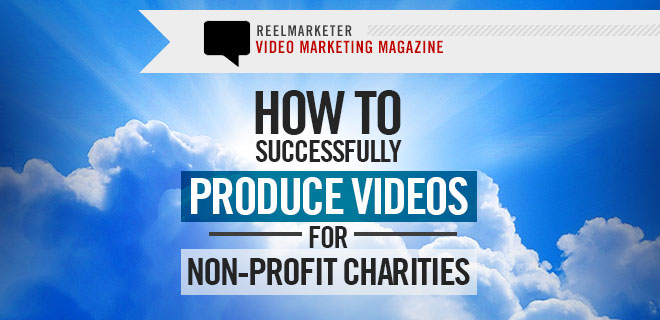Video can be incredibly powerful, appealing to the senses and captivating audiences in ways that other mediums can only dream of. We’re hardwired to respond to sight and sound, and if you back this up with great storytelling you can create emotional connections that inspire action – perfect for fundraising campaigns.
When done well, a good charity film will raise both awareness and income, engaging viewers and delivering messages that make an impact. But what makes a great charity video? How do you successfully drive engagement and boost ROI (return on investment)?
Guest Article Written by Jon Mowat
Here’s a six tips to kick start your lower-budget campaign:
1. Clearly identify your video's objectives
Defining your goals is essential to success. You need to outline why the viewer is watching, what impression you want to leave them with and what action you hope they take. Do you want them to donate, learn more about what your organization does, share with friends or sign a petition?

Use this information to put together a creative brief, ensuring that your video stays on point throughout production.
2. Know your audience and don’t be afraid to get personal
If you don’t know your audience, you’re likely to produce videos that fail to engage, spelling disaster for your whole campaign. Understanding who you’re making the film for is vital to getting the tone and style spot on.

We recently worked with Together for Short Lives, the leading UK charity for children with life-threatening and life-limiting conditions, to create a video that would raise their profile and fundraising potential.
After discussions with the client and some careful research of their target audience, we determined that an emotive, story-based, personal approach would be more effective than the informational ‘talking head’ concept that was originally put forward.
Direct Video Link: https://www.youtube.com/watch?v=6qwndXMfmso
This analysis started us on the path to creating ‘We’re having a baby’, a short animated film based on real-life accounts from parents who have used charity. They were sensitively interviewed and we then turned their stories into a script that worked well alongside our hand-drawn animation, creating a narrative that really hit home.
The film won several awards but most importantly it was successful in meeting the client’s objective, which was to raise awareness for their services. The film enabled the organisation to gain traction with key figures in the media, and it was featured on prestigious blogs such as Mumsnet and Creative Bloq. It has also had over 20,000 views on YouTube, which is 10 times the number for any of their previous videos.
3. Include a call to action
If your video is not clear about what you want viewers to do, it’s likely they’ll do nothing.
If you want donations or other action items, don’t beat around the bush, ask for them. Seriously, spell it out, and ask them. “Make a donation today”, as an example.
Together for Short Lives’ film was designed purely for informational purposes, so their call to action was their web address, featured prominently at the end, providing viewers with an easy route to learn more.
4. Make your video (easily) shareable
If you give people easily accessible tools to share your video, they will. Social sharing increases the reach of your campaign, and video is the most shared type of content on Facebook so it’s good practice to encourage this if you really want your message to spread.

If you host the video on your website, be sure to insert a prominent embed code beneath it, allowing people to showcase it on their site/blog, and always make sure that you enable social sharing so people can distribute it across social media.
It’s also a good idea to provide a unique hash tag that people can use across Twitter and Facebook, so that individual tweets or posts can become part of a larger ongoing conversation. With the Together for Short Lives campaign, all tweets and posts included the hash tag #HavingABaby.
5. Keep Your Video's Length brief
Your video should ideally fall between 30 seconds and 3 minutes.
This will ensure that you keep your audience’s attention.
Longer videos are great for people who already know what you’re about, but to make an impact with those who are new to your organization – shorter is better.
6. Test Your Video. Get it Out There!
The only way to know if your video works is through testing, gathering feedback and then using all that knowledge to make your next video even better. If your test viewers feel that your film is too long or talky, shorten efforts and streamline future scripts.

Fundraising and awareness-raising videos allow for creative storytelling that authentically connects with targeted audiences. By getting personal and sharing real experiences, you’ll find that video content can become key to future success.
About the Author:
Jon Mowat runs Hurricane Media, specializing in all forms of video marketing. Follow @HurricaneMedia on Twitter and connect with Jon on LinkedIn.





